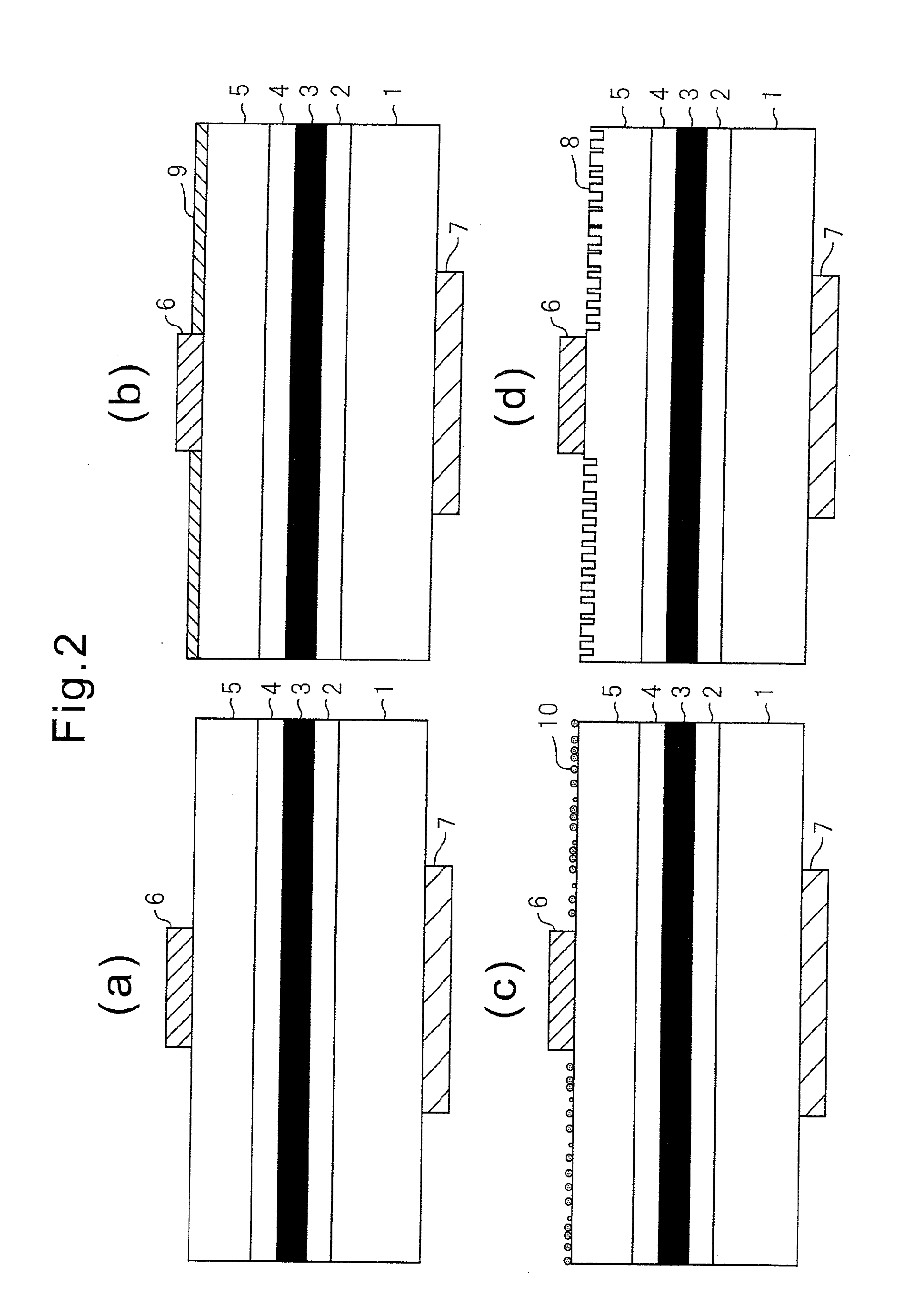Resin composition for pattern formation, pattern formation method and process for producing light-emitting element
a technology of pattern formation and composition, applied in the direction of film/foil adhesives, electrical devices, decorative surface effects, etc., can solve the problems of low light extraction efficiency by which light generated within the element is extracted outside the element, requiring the use of costly equipment, and extremely minute processing, so as to improve the brightness of the light-emitting element and avoid the effect of circularity
- Summary
- Abstract
- Description
- Claims
- Application Information
AI Technical Summary
Benefits of technology
Problems solved by technology
Method used
Image
Examples
synthesis example 1
[0131]980 g of dehydrated and degassed tetrahydrofuran
[0132](THF) as solvent, 0.8 mL of a hexane solution of n-butyl lithium (n-BuLi) as initiator (approx. 0.16 mol / L), and 20 g of dehydrated and degassed styrene as monomer were placed in a 2 L flask followed by stirring for 30 minutes while cooling to −78° C. in a nitrogen atmosphere, adding 34 g of dehydrated and degassed methyl methacrylate as a second monomer and stirring for 4 hours. Subsequently, the reaction solution was added to a container containing 3 L of denatured alcohol (Solmix AP-1, Japan Alcohol Trading) while stirring, and the precipitated polymer was vacuum-dried overnight at room temperature.
[0133]The dried polymer was filled into a Soxhlet extractor and a by-product was extracted using cyclohexane as solvent. This by-product was identified as polystyrene having a number average molecular weight (Mn) of 366,000 on the basis of nuclear magnetic resonance (NMR) and GPC analyses.
[0134]The GPC apparatus, column and po...
synthesis example 2
[0145]Synthesis and characterization of the block copolymer were carried out in the same manner as Synthesis Example 1 with the exception of changing the amount of dehydrated and degassed methyl methacrylate added as the second monomer to 20 g. As a result, the resulting block copolymer was identified as having an Mn of the PS moiety of 292,000 and an Mn of the PMMA moiety of 324,000. This was designated as BC-2.
synthesis example 3
[0146]Synthesis and characterization of the block copolymer were carried out in the same manner as Synthesis Example 1 with the exception of changing the amount of dehydrated and degassed methyl methacrylate added as the second monomer to 80 g. As a result, the resulting block copolymer was identified as having an Mn of the PS moiety of 241,000 and an Mn of the PMMA moiety of 1,138,000. This was designated as BC-3.
PUM
| Property | Measurement | Unit |
|---|---|---|
| thickness | aaaaa | aaaaa |
| temperature | aaaaa | aaaaa |
| time | aaaaa | aaaaa |
Abstract
Description
Claims
Application Information
 Login to View More
Login to View More - R&D
- Intellectual Property
- Life Sciences
- Materials
- Tech Scout
- Unparalleled Data Quality
- Higher Quality Content
- 60% Fewer Hallucinations
Browse by: Latest US Patents, China's latest patents, Technical Efficacy Thesaurus, Application Domain, Technology Topic, Popular Technical Reports.
© 2025 PatSnap. All rights reserved.Legal|Privacy policy|Modern Slavery Act Transparency Statement|Sitemap|About US| Contact US: help@patsnap.com



